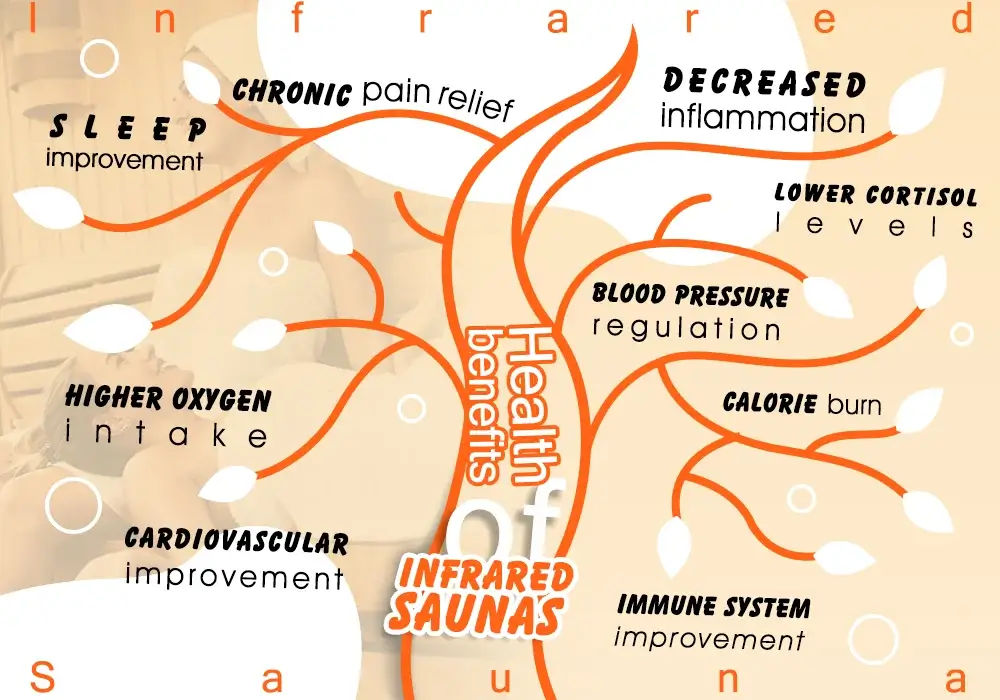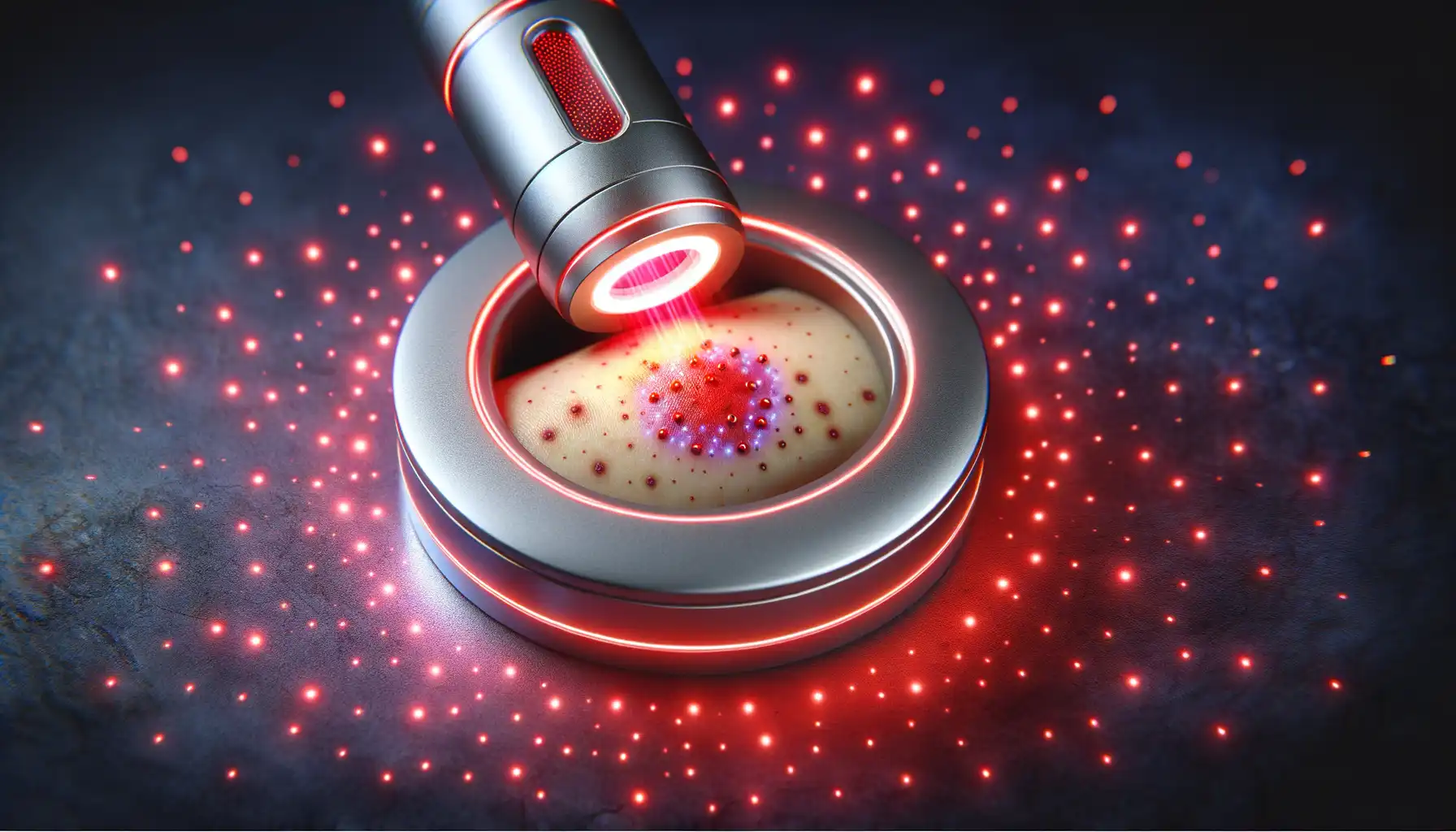Can a warm, relaxing session really make a difference when you feel run down? Let's explore how infrared saunas work, what potential benefits they offer for your immune system, and how to use them safely when you're sick.
First, What Is an Infrared Sauna?
Unlike a traditional sauna that heats the air around you, an infrared sauna uses special lamps to warm your body directly with infrared light. This light penetrates your skin more deeply, raising your core body temperature from the inside out.
The experience is often described as more comfortable than a traditional hot-air sauna because the ambient temperature is lower. You get a deep, productive sweat without feeling like you're breathing in scorching air. This unique mechanism is key to the potential infrared sauna benefits people talk about.
Infrared Sauna and Your Immune System: The Connection
When you're fighting off a virus, your immune system is working overtime. The idea behind using a sauna for cold relief is that raising your body temperature can create a sort of "artificial fever."
Fever is one of your body’s natural defense mechanisms. By raising your internal temperature, it creates a less hospitable environment for viruses and bacteria to thrive. An infrared sauna session mimics this effect, potentially giving your immune system a helping hand.
Boosting Circulation
The heat from an infrared sauna causes your blood vessels to dilate, which improves circulation. Better blood flow means more oxygen and immune cells can travel throughout your body to where they are needed most. Think of it as sending reinforcements to the front lines of your internal battle against germs.
Sweat It Out?
Sweating is your body's primary way of cooling down, but it also helps flush out substances. While the science on "detoxing" through sweat is complex, the act of sweating itself can feel cleansing and refreshing when you’re congested and sluggish.
Potential Infrared Sauna Benefits for Cold and Flu Symptoms
When you're sick, your goal is simple: feel better. While an infrared sauna is not a cure, it may help manage some of the most uncomfortable symptoms of a cold or flu.
Soothing Aches and Pains
One of the worst parts of the flu is the body aches. The deep-penetrating heat of an infrared sauna can help relax tense muscles and soothe joint pain, offering a gentle, comforting form of relief. The improved circulation also helps reduce inflammation that contributes to that achy feeling.
Clearing Congestion
Have you ever noticed how a hot shower can temporarily clear your sinuses? A sauna session can have a similar effect. The warm, steamy environment (you can place a bowl of water in the sauna to add humidity) can help loosen mucus in your nasal passages and chest, making it easier to breathe. For many, this provides welcome, albeit temporary, sauna cold relief.
Promoting Relaxation and Better Sleep
Being sick is stressful, both physically and mentally. It’s also notoriously difficult to get good sleep when you can't breathe and your body aches. The gentle, enveloping warmth of an infrared sauna is deeply relaxing. It can help calm your nervous system, reduce stress, and prepare your body for more restful sleep—which is absolutely essential for flu recovery.
What Does the Science Say?
It's important to approach this topic with a balanced view. The research specifically on infrared saunas for the common cold and flu is still emerging. However, studies on traditional saunas and heat therapy provide some interesting clues.
Some older studies have suggested that regular sauna use may reduce the incidence of common colds. A study published in the Annals of Medicine found that a group who regularly used saunas had fewer colds than the control group. The theory is that regular heat exposure may help bolster the immune system over time.
More broadly, heat therapy is recognized for its ability to reduce muscle pain and increase flexibility. This supports the idea that a sauna session could ease the body aches associated with the flu. According to information from the National Institutes of Health (NIH), hyperthermia (raising body temperature) can have several positive effects on the body, including improved blood flow.
However, it's critical to note that direct evidence proving that an infrared sauna can shorten or cure a cold or flu is limited. The primary benefits should be viewed as supportive care and symptom management.
A Practical Guide: Using an Infrared Sauna When Sick
Timing and approach are everything. Using a sauna incorrectly when you're ill could do more harm than good.
The Big Question: Should You Use a Sauna with a Fever?
No. This is the most important rule. If you have a fever, your body is already working hard to regulate its temperature. Adding intense external heat from a sauna can overwhelm your system and lead to dangerous overheating or severe dehydration. Wait until your fever has completely subsided for at least 24 hours before considering a sauna session.
When Is the Best Time to Go?
The ideal time to use an infrared sauna is at the very first sign of sickness—that scratchy throat or general feeling of malaise before a fever sets in. A gentle session at this stage may help support your immune response.
It's also useful during the recovery phase, after the worst symptoms and any fever have passed. A session can help soothe lingering aches, clear remaining congestion, and help you relax as you get back on your feet.
How to Have a Safe Session
Stay Hydrated: This is non-negotiable. Drink plenty of water before, during, and after your session. Sickness is already dehydrating, and you'll be sweating a lot. Adding an electrolyte drink can also be beneficial.
Start Low and Go Slow: You don't need to push your limits. Start with a lower temperature, around 110-120°F (43-49°C), for a shorter duration. A 15-20 minute session is plenty when your body is already under stress. Listen to your body and get out if you start to feel dizzy, nauseous, or unwell.
Rinse Off Afterwards: A lukewarm shower after your session will rinse off the sweat and can feel invigorating. Avoid shocking your system with a cold plunge.

Infrared sauna safety and Risks
While generally safe for healthy individuals, there are important considerations, especially when you're sick.
Who Should Avoid the Sauna?
Certain individuals should consult a doctor before using an infrared sauna, especially when ill. This includes people who:
Are pregnant
Have low blood pressure
Have a serious heart condition
Are taking medications that affect body temperature or sweating
Are prone to dehydration
The Centers for Disease Control and Prevention (CDC) advises that anyone with severe flu symptoms should focus on rest and hydration, and consult a healthcare provider. A sauna should not replace medical advice.
Listen to Your Body
This is the golden rule of infrared sauna safety. If you feel lightheaded, dizzy, or uncomfortable at any point, end your session immediately. Pushing through is counterproductive and potentially dangerous.
Complementary Care for Cold and Flu Recovery
An infrared sauna session is just one tool in your wellness toolkit. Combine it with other evidence-informed self-care practices for the best results.
Rest: Your body needs energy to fight infection. Don't underestimate the power of sleep.
Hydration: Water, herbal tea, and broth are essential for thinning mucus and preventing dehydration.
Nourishment: Focus on easy-to-digest, nutrient-dense foods like soups, fruits, and vegetables to support your immune system.
Humidifier: Using a humidifier in your room can keep your airways moist and help with congestion, especially while you sleep.
When to See a Doctor
Self-care is great for mild colds, but it’s crucial to know when to seek professional medical help. Contact your doctor if you experience:
A high or persistent fever
Difficulty breathing or shortness of breath
Chest pain or pressure
Confusion or severe dizziness
Symptoms that don't improve after a week
The Bottom Line
So, is sauna good for colds? An infrared sauna is not a miracle cure for the cold or flu. However, when used correctly—and never with a fever—it can be a wonderful tool for supportive care. It has the potential to soothe body aches, help clear congestion, reduce stress, and promote the restful sleep your body desperately needs for flu recovery.
By approaching it as a complementary therapy for symptom relief and combining it with rest and hydration, an infrared sauna can be a comforting and beneficial part of your plan to feel better faster.



